Contact us today:
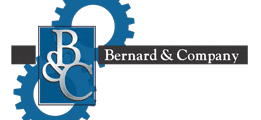
(847) 934-4500
tdaro@bernardandcompany.com

Contact us today:
(847) 934-4500
tdaro@bernardandcompany.com

This Grieve cabinet oven features 4” insulated walls, aluminized steel exterior, Type 304, 2B stainless steel interior, a silhouette plate with removable cover inside the door opening and an oven hearth driven by a ¼-HP motor through a gear reducer with a torque limiting device variable from 1 to 27 RPM. This 19” diameter oven hearth is constructed from Type 304 stainless steel with 1” studs on 1” centers to support the paint coupons in process.
All safety equipment required for handling flammable solvents are onboard No. 987, including explosion-venting door hardware.
Controls onboard No. 987 include a digital indicating, time proportioning temperature controller and excess temperature controller with separate heating element control contactors. An auto door switch stops hearth movement when the oven door is opened.
For more information, please contact:
THE GRIEVE CORPORATION
500 Hart Road
Round Lake, Illinois 60073-2835
Phone: (847) 546-8225
Fax: (847) 546-9210
Web: www.grievecorp.com
Email: sales@grievecorp.com
Attention: Frank Calabrese
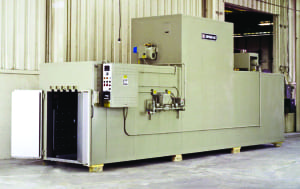
This Grieve oven has 4” insulated walls, top-mounted heating chamber, aluminized steel interior and exterior, plus five (5) monorail tracks mounted at the top of the oven’s workspace.
All safety equipment required by IRI, FM and NFPA Standard 86 for gas-heated equipment are included on this walk-in oven, including a 325 CFM, 1/3-HP powered forced exhauster.
Controls on No. 889 include a digital programming temperature controller and 6-point strip chart recorder with 1-point air temperature, 2-point vacuum and 3-point load temperature recording capability.
For more information, please contact:
THE GRIEVE CORPORATION
500 Hart Road
Round Lake, Illinois 60073-2835
USA
Phone: (847) 546-8225
Fax: (847) 546-9210
Web: www.grievecorp.com
Email: sales@grievecorp.com
Attention: Frank Calabrese
Whether the application involves producing/removing chips or moving parts/scrap pieces, Hennig can provide the chip conveyor for all machine tool requirements. The company’s new 2-1/2” pitch steel belt can be made for most applications in the field when the standard 1-1/2” pitch belt is not effective for the particular conditions present.
Conveyors from Hennig, a leading supplier of chip conveyors to the global machine tool market, can be manufactured in widths from 4” to 80”, depending on the need. The unique Hennig belt hinge is designed as one continuous piece, whereas many competitive brands do not have this feature. The manufacturing of these belts is done on Hennig’s in-house press equipment.
Hennig recognizes the special requirements needed when designing a parts conveyor on which direct loads contact the belt. Impact plates are just one of the many options to be considered when customizing a conveyor for these applications.
Chip volumes can also vary between applications, so speeds and sizes are always evaluated by Hennig’s engineers. Special incline covers (top hat design) can be included when larger amounts of stringy/balled chips are to be evacuated from the machine.
As adjunct to this new 2-1/2” pitch steel belt conveyor, Hennig also offers complete filtration systems, as needed. The company’s Chip Disc Filtration (CDF) systems can also be used with the new 2-1/2” pitch conveyor. These systems can filter down to 25 microns and additional bag filters can be included to achieve the through-spindle requirements on most machine applications.
Whether the need involves moving chips into a hopper, evacuating larger volumes of chips through a plant wall into a truck/dumpster or hauling scrap parts from the machine, Hennig can assist machine builders and end users alike with any specific requirements.
Innovations and new developments in machine tool design present myriad opportunities for the engineers at Hennig (www.hennigworldwide.com), who have been designing and producing custom machine protection and chip/coolant management products for state-of-the-art machine tools for over 50 years. Hennig products are designed to protect against corrosion, debris and common workplace contaminants. Hennig has manufacturing facilities in the U.S., Germany, Czech Republic, France, Brazil, India, Japan, China and South Korea. Its North American repair centers are located in Machesney Park, Ill.; Chandler, Okla.; Livonia, Mich.; Blue Ash, Ohio; Mexico City, Mexico; and Saltillo, Mexico.
For more information, contact:
Tim Waterman
Hennig Inc.
9900 N. Alpine Rd.
Machesney Park, IL 61115
(815) 316-5277
info@hennig.ame.com
www.hennigworldwide.com
European Contact:
Hennig GmbH, Überrheinerstr. 5, 85551 Kirchheim, Tel. 49 089 96096140
Continue readingCustom configured solution from Hunter allows major Pennsylvania foundry to integrate mold handling line with other brands of automatic molding machines
See the video HERE.
Schaumburg, Illinois (USA) – The Buck Company is an ISO 9001: 2008 Certified foundry in Quarryville, Pennsylvania, near Lancaster and nestled in the Susquehanna Valley near the Maryland border. Here, ferrous and non-ferrous castings of ductile, gray and malleable iron, as well as aluminum and brass are poured in medium and long runs to produce a wide variety of end products for the agricultural, metalworking, materials handling, marine, military and other market segments.
A challenge was presented to Buck’s longtime molding machine supplier, Hunter Automated. Another brand of molding machine had been acquired at Buck for a particular use in the non-ferrous foundry. Hunter was asked to provide a mold handling line for the particular conditions and footprint available at Buck and to devise a “handshake” mechanism to interface with this new machine.
It was determined that the best solution for the floor space and pouring equipment logistics was a Hunter HLH linear mold handling line. However, the pouring height of the Hunter line did not match the mold discharge height of the other machine brand, so an elevation change mechanism was needed to accommodate the difference between the mold’s exit height from the machine and its placement onto the pouring line section of the Hunter line.
The solution was found in a walking beam (boardless) conveyor line devised and patented by Hunter, combined with an articulating arm and elevator mechanism that could raise the mold onto the pouring line for loading of the weight and jacket, all without risking mold shift.
As the mold exits the machine, in this case at Buck, a series of walking beams gently sequence the molds forward to the elevator station. The “traffic cop” on this conveyor is a plurality of proximity sensors, used to monitor each location along the conveyor section and coordinate with the pouring operation, so mold collision and back-up are avoided. As pattern changes are made, work breaks occur or melts are prepped, these sensors remain in operation to protect the integrity of the process.
Once the mold reaches the end of this standard boardless walking beam conveyor section, an articulating arm and elevator mechanism gently raise the mold to the standard height of the Hunter handling system. Achieving this result saved Buck considerable manpower in materials handling, plus floorspace and capital investment, while allowing this Hunter customer to maintain high productivity in this section of its non-ferrous foundry operation.
As Dean Martin, sales manager for Hunter, explains, “We had a meeting of the minds with the automatic molding machine builder and we worked out a feasible plan to solve the handshaking issues presented by this production scenario. There were really no serious setbacks or conflicts, as we had the common goal of satisfying Buck’s requirements with the optimum production results plus an on-target budget.” He further described how the machine builder and Hunter’s seamless working relationship helped develop this transitional walking beam (boardless) conveyor system.
Buck used the expertise of its projects manager Art Tout and non-ferrous foundry superintendent Steve Ward to work with the molding machine builder and Hunter to achieve the best solution. As Steve noted, “The Hunter linear line was more practical than the rotary turntable design, which we also have in another section of the foundry. With a smaller footprint and relatively low maintenance, it was a good solution.” He joked, in describing the way Hunter worked with the machine builder, “They played well in the sandbox together.”
The typical mold being handled on this line weighs 400-500 lbs. (181-227 kg), having been produced on the molding machine with a 20” x 24” plate dimension.

Matt Sullivan, president at Buck, discusses the unique solution devised for the mold handling with Dean Martin, sales manager for Hunter. View the video from this sit-down HERE
Buck President Matt Sullivan observed, “We were very impressed by the way everyone responded. The machine builder and Hunter actually needed very little input from us. We’d presented Hunter with some very tight floorspace restrictions and they worked hard to overcome the challenges for us. We had good experiences with the HLH lines in other parts of the foundry in the past and we were confident it would do the job here, even being modified. We knew the HLH would work from morning to night with few, if any, problems. The option of going vertical with the mold cooling was vital, given the floorspace.” He also noted the installation and the modification of the overall system was seamless.
Martin concluded by noting, “…the boardless conveyor system used here at Buck, while a special modification to our standard board conveyor design, was completely designed, engineered and built by Hunter personnel. We’ve used this solution and others at several companies since the Buck install, with very satisfactory results.”
Hunter holds several patents on the unique features of its mold handling systems, which can be utilized with any boardless molding machine.
For further information on this announcement, interested parties may contact:
HUNTER AUTOMATED MACHINERY CORPORATION
2222 Hammond Drive
Schaumburg, Illinois 60196-1094
USA
Phone: +1 847 397 5136
Email: sales@hunterfoundry.com
Web: www.hunterfoundry.com
Attention: Bill Hunter or Dean Martin
NOARK ENTERS NORTH AMERICAN MARKET AT AHR 2013, BOOTH 5700
A name you may not yet know, but NOARK Electric provides reliable products and efficient solutions to intelligent power and energy systems worldwide. This global supplier of electrical components and intelligent control systems will be presenting an assortment of UL 489 Listed circuit breakers, relays and contactors at the upcoming AHR Expo in Dallas. This show represents the company’s first trade show in the North American market.
The NOARK value proposition centers on products that improve the profitability and maintain the highest levels of performance for customer end products, through the combination of local support with local inventory, exceptional value and superior product quality, backed by the industry’s first 5-YEAR WARRANTY.
Among the many offerings to be displayed at AHR Booth 5700 will be the following NOARK products:
ALL ABOVE NOARK PRODUCTS ARE UL489 LISTED.
Booth personnel will include Paul Xu, VP of Strategy & Marketing, Ken Hilborn, Sales & Marketing Director, Tony Diaz, Product Marketing Manager and Kirk Wilson, West Region Manager.
NOARK Electric, Inc., the North American headquarters of the company, was previously located in Rockford, IL and, due to its rapid growth and inventory commitments, has recently moved to a larger facility in Oak Creek, WI, just south of Milwaukee.
The company is currently in the process of establishing a representative and distribution network to serve its primary markets, which include the building trades and electric panel board builders in various industries.
A global supplier, NOARK currently operates four R&D centers, three distribution centers, 15 office locations and employs over 1000 associates. Sales currently exceed $2 billion worldwide.
For more information, please stop by booth 5700 at AHR Expo or contact:
NOARK Electric, Inc.
9817 South 13th Street
Oak Creek, WI 53154
Phone: 414-304-8189
Website: www.noark-electric.com
Tony Diaz
Email: tony.diaz@noark-electric.com
North Carolina job shop seeks to diversify and expand customer base in aerospace and other markets; boasts “large shop ability, small shop agility”
James Tool began as a five-man machine shop in 1987, founded by James “Bud” Toner and has grown steadily, over the years. Today, under the leadership of Bud’s son Jeff Toner, the shop has become a supplier of quality machined components to Fortune 500 companies and prime suppliers to the aerospace, heavy equipment, automotive, oil & gas, nuclear and transportation industries. James Tool currently comprises three manufacturing centers, namely engineer/build hydraulic workholding, CNC production machining and precision short run CNC machining. The shop recently achieved the highly valued AS9100 registration for its manufacturing protocols and processes.
As Jeff Toner explains, “We were driven by a need for market diversification and expansion of our current business, building on the strengths established from our aerospace success. Our goal is to secure more business in market sectors that demand the same precision and production efficiencies as our aerospace customers.” He also explained how the company, already recognized for its in-house engineering of hydraulic workholding systems and its precision CNC machining capabilities, sought to obtain the AS9100 registration as a further value-add to its current and potential customers in the aerospace market, one of the fastest-growing manufacturing sectors in the Southeast.
James Tool produces parts in prototype, one-off, short run and production quantities, using 4- and 5-axis CNC machine tools, from high and low carbon steels, nickel alloys, aluminum, stainless, thermoplastics and engineered aerospace materials alike.
In seeking the AS9100 registration, the company engaged in a rigorous process that included reviewing and understanding all the standard requirements, evaluating all current processes, gap analysis program (GAP) utilization, revision and implementation of all necessary processes, procedures, manuals, documentation and training, as well as the ongoing evaluation and continuous improvements in the processes and protocols used at James Tool.
In assessing the current state of the company, Toner observes, “We use state-of-the-art CNC machine tools of the latest generation, plus highly advance metrology solutions to achieve and maintain consistent part quality. We have 5-axis vertical machining centers, high-speed milling centers and multi-pallet workstations. In addition, we offer wire EDM, thermal deburring, CNC torch cutting, vibratory stress relief and a black oxide coating system in-house.” To enable this expansion of services and in anticipation of future growth, James Tool took a bold step in the current economy and recently completed additions and expansions onto its statewide facilities in North Carolina. One new facility in Morganton is 30,000 square feet, while another facility houses a new training complex for the company’s workforce, currently over 120 employees. Overall, James Tool now occupies in excess of 100,000 square feet of manufacturing and service facilities in Morganton and Columbus, North Carolina.
CAD (SolidWorks®) and CAM (MasterCam®) programming is all done in-house to support the CNC machining at James Tool.
Looking to the future for James Tool, Toner concludes, “We are a very pro-active company. We make a decided effort to acquire the latest machine tools and other technologies, so that we can continue to provide our customers the very highest quality products in the fastest possible turnaround times. Hand in hand with the machining and metrology advancements, however, must be a corresponding program of training for our current and future employees. Highly trained people create a better environment, where high quality work, safety and production efficiencies lead to the very best experience for our customers. This is an ongoing commitment at James Tool.” The new AS9100 registration and substantial investments made by the company in both new machinery and new facilities are further evidence of this fact, according to Jeff Toner.
For more information on this story, please contact:
James Tool Machine & Engineering, Inc.
130 Reep Drive
Morganton, NC 28655
Phone: 828-584-8722
Fax: 828-584-8779
Web: www.jamestool.com
Email: sales@jamestool.com
Attention: Jeff Toner, President
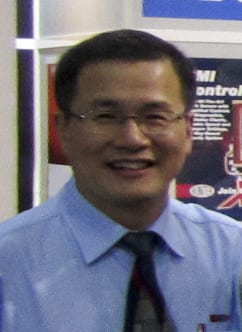
Peter Li’s 16-year career with Hunter has been dedicated to sales and manufacturing management in the Asia Pacific (A/P) territory. He was instrumental in the successful development of the company’s China operation, “Hunter Automated Machinery (Shanghai) Ltd.” Today, Hunter builds machinery and other equipment in China to serve the A/P market.
Peter will be responsible for A/P marketing and manufacturing programs, including the Shanghai plant, the expansion of our agent network and the integration with new partners where necessary for Hunter to compete effectively in the local markets.
For further information on this announcement, interested parties may contact:
HUNTER AUTOMATED MACHINERY CORPORATION
2222 Hammond Drive Schaumburg, IL 60196
Phone: (847) 397-5110
Fax: (847) 397-8254
Email: info@hunterfoundry.com
Attention: Bill Hunter, CEO
Web: www.hunterfoundry.com
Connect with Hunter Foundry online:
HUNTER AUTOMATED MACHINERY CORPORATION
2222 Hammond Drive Schaumburg, IL 60196
Phone: (847) 397-5110
Fax: (847) 397-8254
Email: info@hunterfoundry.com
Attention: Bill Hunter, CEO
Web: www.hunterfoundry.com
Connect with Hunter Foundry online:
Whether we are talking about North America, Asia or Russia, within the oil and gas industry, there is a spirit of optimism. Geological discoveries have led to a massive increase in the estimated reserves in many countries. Along with these discoveries, the potential for the use of innovative technologies has also increased. According to the expert estimates, oil production in the Gulf of Mexico alone will rise from the present 1.3 million to 1.7 million barrels a day during the next decade, with demands for the highly sophisticated technological equipment required to accomplish it increasing as well. Two examples are delivery pipes and casings. To create the connection safely and in perfect alignment depends on the threads on the pipe ends. With its USC turning machines, the specialists from EMAG Leipzig have not only created a tool that specializes in this application – and one that has perfected the production sequence for these threads – but also developed complete solutions that guarantee component quality and process integrity.

Specially optimized for the thread cutting of delivery pipes and casings: the USC series of machines from EMAG
Economic key performance indicators for suppliers to the oil and natural gas industry change rapidly. An impressive example of this is found in the USA. The USA hopes to reduce its dependence on oil imports and instead invest heavily in new technology. An indicator, for the US, are imports of equipment technology for the American oil and gas industry, which the U.S. Department of Commerce for 2012 show an increase of 33 percent, compared to the previous year. The experts also expect a production boom in South America and Asia. For Brazil, the foreign trade experts at Germany Trade and Invest (GTAI) predict a “high level of growth in new reserves“. And on the other side of the globe, the investment volume in the oil and gas sector of Vietnam alone has reached 40 billion USD, according to GTAI.
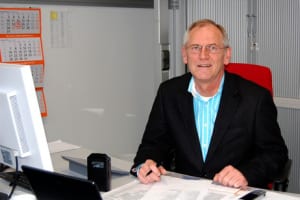
Frank Schiffler, Head of Sales at EMAG Leipzig Maschinenfabrik: “We design all-round solutions. In addition to that, we have available a comprehensive service network. The two together guarantee the economic success we enjoy among our clientele.“
The experts at EMAG Leipzig are aware that this extraordinary dynamic has a direct impact on the production of the required technology. For decades, the machine builders at Leipzig have been specializing in the machining of delivery pipes and casings for the oil and gas industry. Many users can no longer do without their special know-how in demanding thread production. Frank Schiffler, Head of Sales, fills us in on the background: “We are talking about a gigantic production output. One steel mill produces up to 2 million metric tons of pipes per annum. Component quality is paramount for these because the pipe threads have to be totally leak-proof and must carry the enormous total weight of pipe and oil during the delivery. The machining centers used must ensure that the quality and efficiency of the threads produced is 100%.”
Flexible solutions for the production of pipes
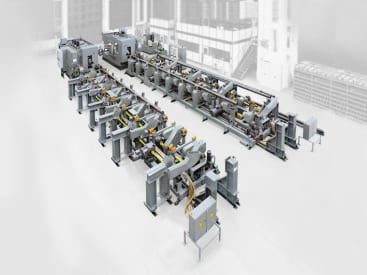
The flexible loading of the workpieces is designed specifically for the customer and fully automated. The transport system does not need to be reset and adjusts itself to individual tasks and workpiece dimensions
The USC series from EMAG Leipzig Maschinenfabrik represents an extraordinary, sophisticated solution for this particular production requirement. Flexibility is very important in the construction of these turning machines. Not only do the different machine sizes allow for the complete-machining of different sizes of pipes with external and internal threads to API and GOST standards, they can also cut all proprietary threads. “The larger oil field technology producers have their own thread standards. We can adjust our machines perfectly to their demands“, explains Mr. Schiffler. For instance, all workholding and centering equipment is configured to suit individual requirements. The same applies to all automation components. As a result, the customer has an extremely fast production solution that automatically loads and unloads the components in 12 to 20 seconds (depending on pipe size and thread type), then carries out the 3-part threading process – from facing to chamfering and finally threadcutting. The output ratio therefore increases enormously, compared with that of traditional turning machines.

These machines handle an enormous amount of pipe material and are made to perfectly suit manufacturer’s individual requirements. The threading process itself takes just 12 to 20 seconds
However, there are two important factors that must be taken into account when machining threads on delivery pipes and casings: processing quality and process integrity. The quality is guaranteed by a perfectly adjusted machine, with proven EMAG technology and the know-how of the speciality machine builders from Leipzig come together. The whole process benefits from the following important design details:
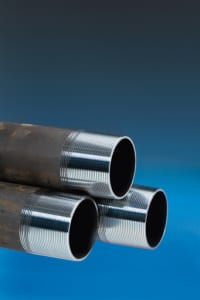
The USC series offers great rigidity, preloaded linear guideways and dampening clamping systems that together ensure the production of thread profiles as smooth as glass
“This quality is a feature of all our USC series machines,” acknowledges Mr. Schiffler. Depending on the machine used, the max pipe diameter can be any dimension from 2⅜” to 20”.
Complete solutions guarantee process integrity
When faced with high production rates, fast machining processes and expensive pipe blanks, machine downtimes are particularly costly for the manufacturer. For this very reason, the process integrity of these machines is another key development area in Leipzig. “We design complete solutions for our customers, who – in turn – benefit from the quality of the EMAG components“, explains Mr. Schiffler. “In addition to that, we integrate, for instance, measuring stations, crack detection equipment, embossing and plating units and, of course, a monitoring system that covers all components. At the end, what we supply is a production system that guarantees the greatest possible degree of process integrity.“ Of similar importance in this context is the worldwide service presence of the specialists. Not only are both user and maintenance staff trained to perfection, a 24-hour 365-day telephone service is also available. This ensures that possible machine downtimes are reduced to an absolute minimum.

The two compound slides with 4-position table-type turrets of EMAG design accommodate a number of different tooling systems. The various quick-change toolholders hold tools for external and internal turning operations. The compound slides are subject to high rapid traverse speeds in X- and Z-axis and ensure idle times are kept short. The guideway system for the slide unit features pre-loaded linear roller guides for greatest machining accuracy and high dynamics
Projects from A to Z
How do the special machine manufacturers assess their market opportunities over the next few years? Mr. Schiffler’s judgement on the market’s dynamic is a positive one: “We already are the market leader in machines for the threading of oil and gas pipes; and we intend to further extend this position.“ One formula for success in this field is the famous “Made in Germany“ – which is a sign for quality. Over 70 percent of the machine components are made and assembled at EMAG in Germany. Every customer comes to Leipzig for the machine acceptance, where the first test run, using the actual pipe blanks, is carried out. Only then will the machine be installed at the production site. “Our particular quality of service kicks in long before the machine is built, or the central claim made by EMAG Leipzig would not be a valid one. Our name stands for projects that are carried through to perfection from A to Z, and that represent all-round solutions.“
See the USC series in action HERE.
For more information:
Kristal Kilgore
EMAG LLC
38800 Grand River Avenue
Farmington Hills, MI 48335
Tel: (248) 875-0313
Fax: (248) 477-7784
E-mail: kkilgore@emag.com
Web: www.emag.com
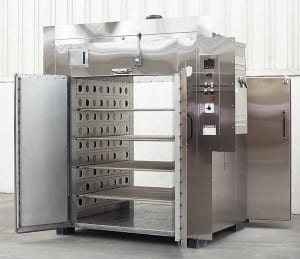
This Grieve oven has 4” insulated walls, 2” insulated floor, top-mounted heating chamber, Type 304, 2B stainless steel interior, stainless steel exterior with #4 brushed finish, double doors front and rear, plus a special sealing flange to allow the oven to seal into a wall between a cleanroom and the fabrication area in the customer’s facility.
Controls on No. 981 include a digital indicating temperature controller, manual reset excess temperature controller with separate contactors, recirculating blower airflow safety switch and a 30-hour shutdown timer.
For more information, please contact: THE GRIEVE CORPORATION, 500 Hart
Road, Round Lake, Illinois 60073-2835 USA. Phone: (847) 546-8225. Fax: (847) 546-
9210. Web: www.grievecorp.com. Email: sales@grievecorp.com. Attention: Frank
Calabrese.
Continue reading